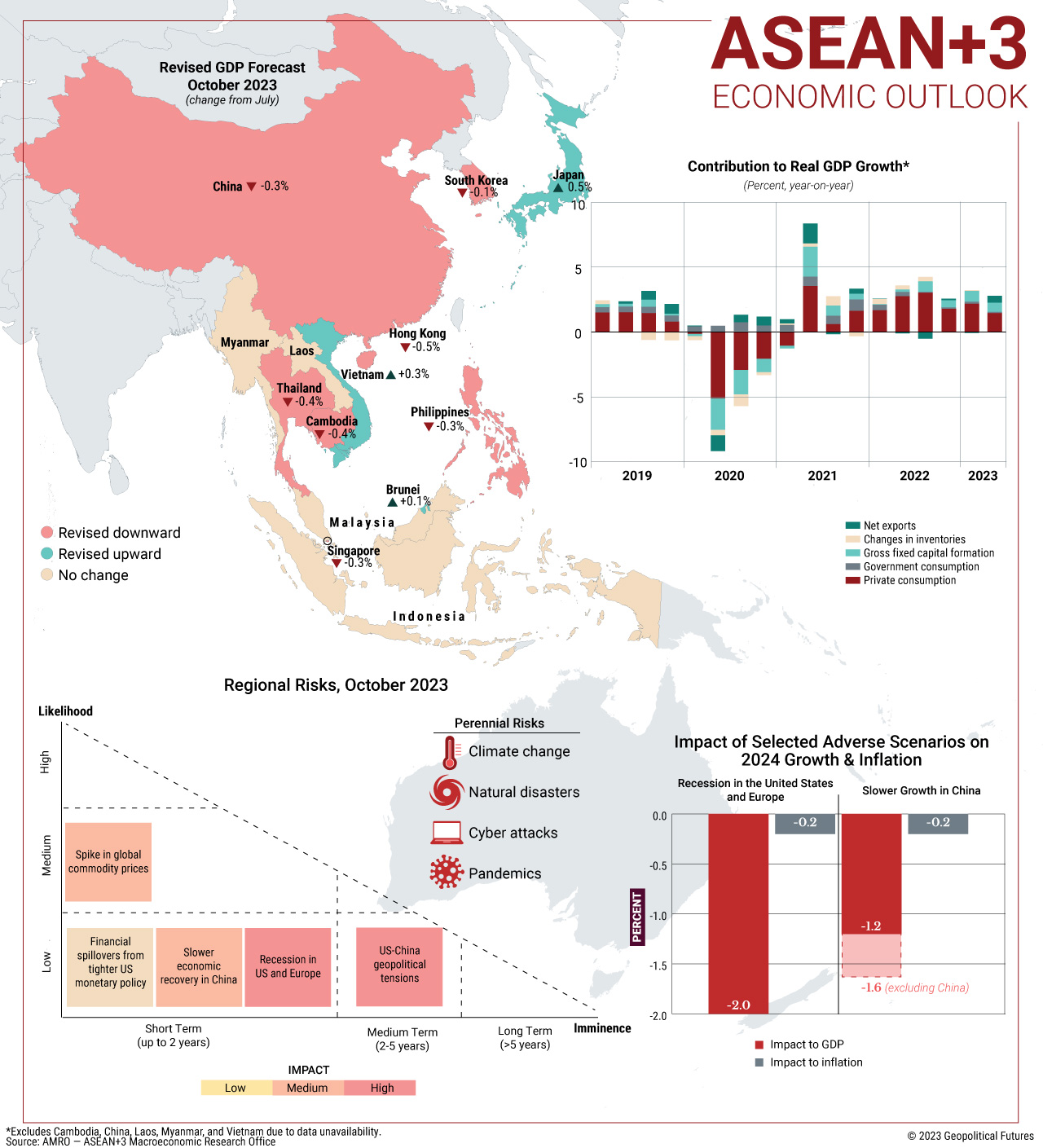Amid China’s weaker-than-expected economic performance, the ASEAN+3 Macroeconomic Research Office cut its 2023 growth forecast for the region to 4.3 percent from July’s projection of 4.6 percent. Given that China is by far the largest economy in the grouping – which comprises the 10 states of the Association of Southeast Asian Nations as well as China, Japan and South Korea – it is natural that its downturn will affect the others’ economic growth prospects. Nor are China’s struggles the only drag on growth; others include elevated food and energy prices, El Nino weather effects and the strength of the U.S. dollar, all of which could lead to higher inflation in the region. In addition, lower foreign demand has depressed manufacturing exports, and economic uncertainties have hampered investment.
Still, the long-term outlook for the grouping is far from bleak. In China, manufacturing investment is holding up and consumer spending is starting to rise – two factors that will support regional growth. The region’s non-tech exports increased 50 percent in the first half of 2023, demonstrating a pick-up in U.S. demand for durable goods. Domestic demand has remained strong all over ASEAN+3 and is expected to drive a rebound next year. Finally, tourism has surged to around 70 percent of pre-pandemic levels. Weaker global growth will slow ASEAN+3’s expansion in the near future, but the outlook for next year is generally positive, which is reflected in AMRO’s projected growth of 4.5 percent.




 Special Collection – The Middle East
Special Collection – The Middle East